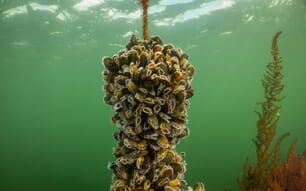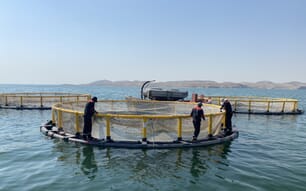The ministry's director for fish medicine and feed, H. Sarifin, said that for its early stage, the insurance would be prepared for shrimp cultivation centers.
"The insurance will be used for protecting shrimp farming business from (losses due to) flood, tsunami, earthquake, and other natural disasters," Mr Sarifin said.
According to AntaraNews.com, an insurance of Rp37 million (US$2,773) per hectare would be paid for farmers who suffer losses due to the natural disasters.
The shrimp farmers who are eligible for the insurance should have at least 2 hectares of farms, he said adding that the insurance programme would have been implemented in three provinces, including South and East Kalimantan.
He disclosed that in 2017, the ministry has been prepared to revitalize 300 hectares of fish farming, develop 210 hectares of fish-rice farming, and 100 million of seeds.
It would also build two feed factories, three offshore floated cages, and 200 units of self-contained feed.
Meanwhile, Chairman of the Shrimp Club Indonesia (SCI) for West Java Banten Joko Sasongko said the national shrimp production in 2016 reached 265,000 tons, declined from 380,000 tons production in 2015.
The declining production was due to the infection of white feces syndrome (WFS), white spot syndrome (WSS), and Infectious Mionecrosis Virus (IMNV).
In West Java, the shrimp production was recorded at 24,000 tonnes in 2016 or lower than the 2015 production of 30,000 tonnes.
"The shrimp production barrier in 2016 was white spot syndrome," Mr Joko said.
The disease was spread over West Javas areas like Karawang, Cirebon, Cianjur, and Pangandaran as well as Pandeglang in Banten Province.




